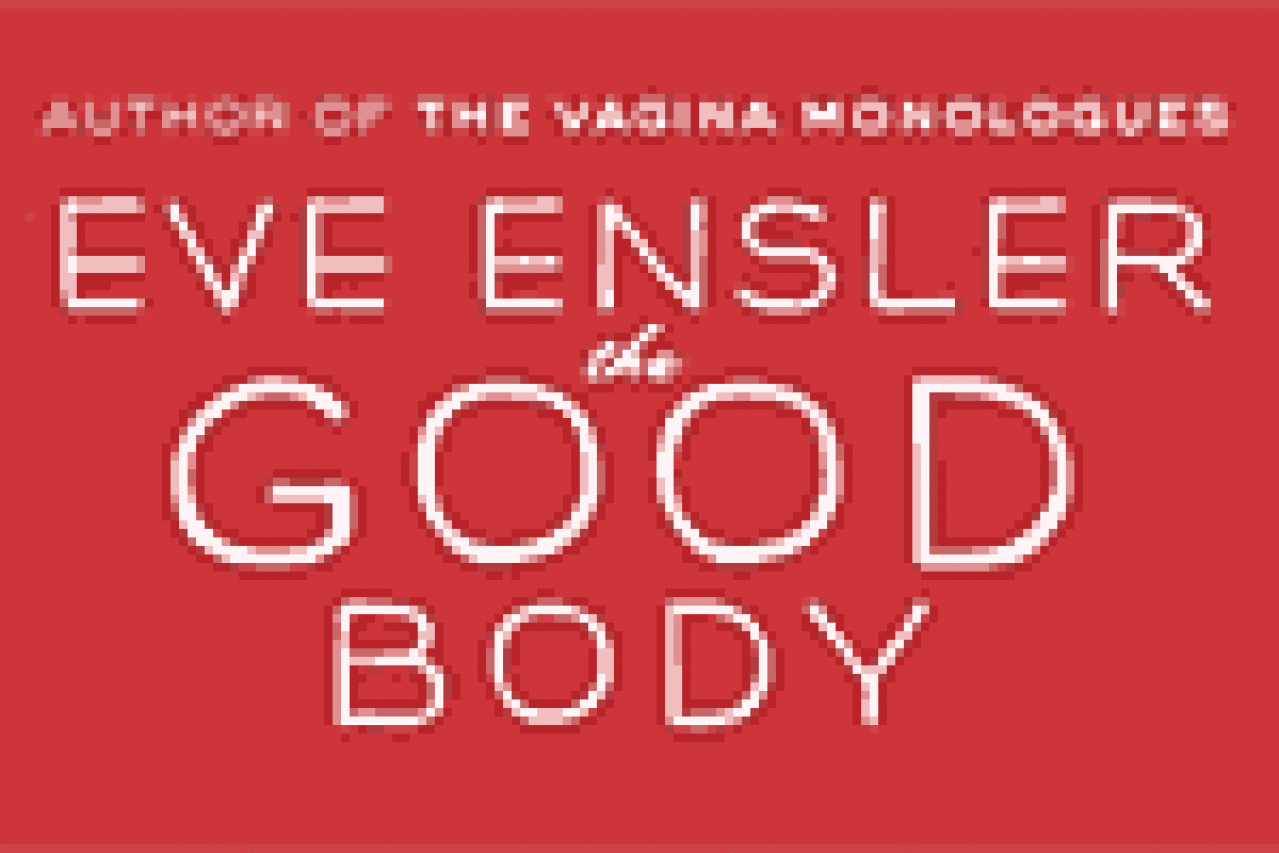The Good Body

(Photo © Joan Marcus)
Plastic surgeons and diet developers worldwide must be quaking at the news that Eve Ensler has composed a monologue called The Good Body, which — for anyone not able to get to New York’s Booth Theatre anytime soon — is also available in book form. Ensler is the writer-actor who encouraged women with her bold theater piece The Vagina Monologues to discuss genitalia without shame or embarrassment and, as one of the consequences, has raised at least $25 million for V-Day, the global movement to stop violence against women and girls. If The Good Body has anything like the effect Ensler’s previous work had, women may come to a new appreciation of themselves and their bodies, leaving liposuction purveyors on all continents scrambling for alternative ways to use their expensive equipment.
“I performed The Vagina Monologues for six years,” Ensler confides well into her sincere new show. “I had finally come to like my vagina, until one day I realized the self-hatred had just crept up into my stomach.” And there’s the thrust of her argument — not to mention the thrust of her round belly, which she bares twice. During her approximately 90-minute discourse, she talks animatedly about her obsessive attempts to give up bread and anything else highly carbonated and caloric so that she might achieve flat abs. On her agitated journey to do what women are regularly told they must by one magazine after another, she meets and quotes sister searchers who are bent on improving parts of their anatomy — and she hears from women who are pointedly not framing that objective for themselves. After she’s talked to, for instance, a 35-year model whose cosmetic surgeon husband regards her as his laboratory, she gets around to chatting with the outspoken former Lancôme icon Isabella Rossellini and three other women who divulge realistic viewpoints. They suggest that Ensler begin to take herself as she is. A 74-year-old Masai, pehaps the wisest of the group, insists that Ensler look at two trees and then asks, “Do you hate that tree ’cause it doesn’t look like that [other] tree?”
Ensler is addressing two significant body-related issues: societal values and acceptance. For women suffering from what used to be called low self-esteem — and still is in circles where psychobabble rules — she may have found no more important themes to take on as a follow-up to The Vagina Monologues. This material is not only of interest to women but also to the men (and women) who love them. In one moving segment, Ensler recounts her male partner’s declaration before slamming the front door Nora Helmer-like, “I don’t have an issue with your stomach. I have an issue with you. You’re not here…I’m not going to compete with your stomach anymore.” Just as The Vagina Monologues is ostensibly aimed at women but is pertinent to men, so is The Good Body.
There’s something curious about The Good Body, which I read before viewing. On the page, it seems — you should pardon the expression — lightweight. Ensler looks to have taken on a challenge and then dealt with it only superficially. She breezily refers to current trends such as the importance of health clubs to women today and the lure of plastic surgery and liposuction. She allows a few of those interviewed on the subject of the oppressive thin-is-in phenomenon to tell tales of pride or humiliation. Among the former, there’s a lesbian empowered by piercing; among the latter, there’s a confidante who thinks that breast reduction will solve her emotional problems but finds out otherwise, and there’s a Latina who explains with comic poignancy how to deal with buttock spread. But there’s much more to be mined, such as historical eras when ample shapes were desired and desirable. And what about changing contemporary attitudes? Today, many African women are AIDS-afflicted. Since the ailment’s known on parts of the continent as “the slim disease,” has the plump woman become a new ideal?
On stage, though, Ensler — you should pardon another expression — fleshes out her findings. Directed by Peter Askin to be a model of nervous energy, she renders vital what feels gabby in print. And Askin, who also works with John Leguizamo, makes certain that set designer Robert Brill, lighting designer Kevin Adams, video designer Wendall K. Harrington, sound designer David Van Tieghem, and costume designer Susan Hilferty contribute stage-worthiness to something that’s essentially a lecture with visual aids. As Ensler reveals more and more of The Good Body, the misgivings she has about her appearance are infused with urgency. The sympathy and empathy she has for the women to whom she turned is touching. The impersonations are adept, if not exact; her Helen Gurley Brown comes off like Julia Child, while her Isabella Rossellini is only a sketchy approximation of someone whose inflections are also those of her mother, Ingrid Bergman.
Ensler’s need to convey to the women in her audience the importance of knowing who they are and learning to like it is moving and genuine. The upshot is not so much that Ensler is probing a subject with an author’s compulsion to know all but that she’s a friend with a burning impulse to pass on something critical that she’s discovered. More than anything, she is doing a welcome kindness.











